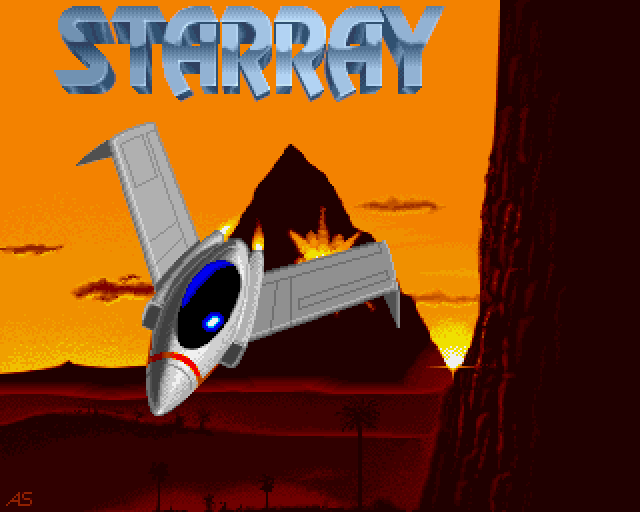


The copper was used to switch the color registers between the logo and the rest of the image. Nearly all palette entries are changed, except the orange background colors which have to remain the same between both palettes so that the switch doesn't get noticed.


Same background but different spaceship. There are no visible artifacts and the previously obscured explosion looks coherent to the rest of the style. I think it's highly likely that this was an earlier artwork from Arno.

Original title art for Starray on the Atari-ST by Pete Lyon. It looks like this may have been inspired by the variation of the title screen, since the spaceship is flying in the same direction and also has similarly double-angled wings.






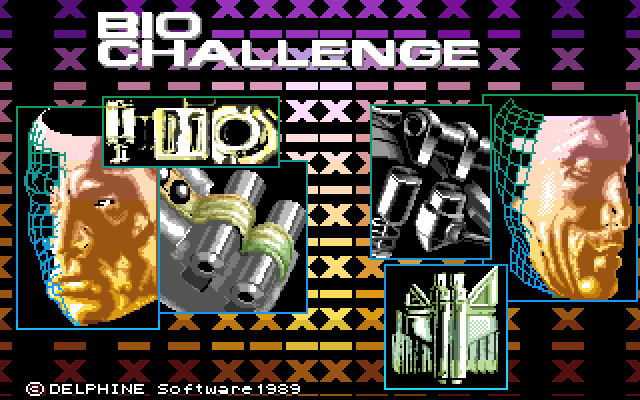










Bio Challenge uses the copper quite extensively to add subtle color shifts to nearly all images. The color palette is changed every 20 lines creating an image with nearly 70 colors from a bitmap with only 16 colors.
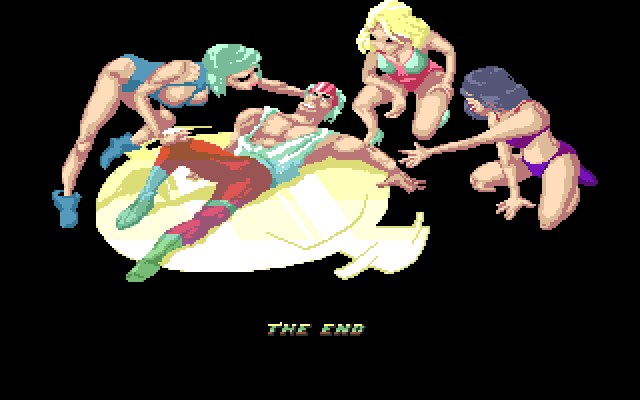





















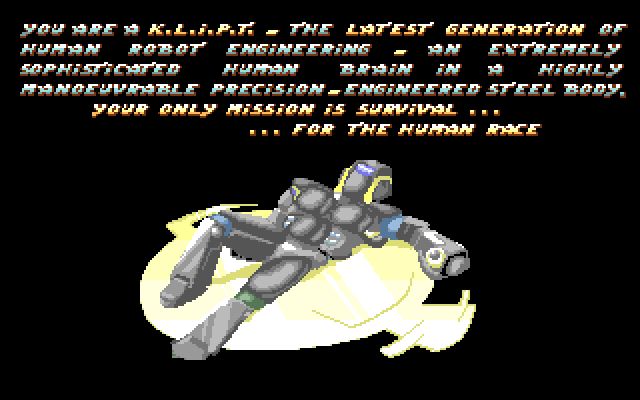





















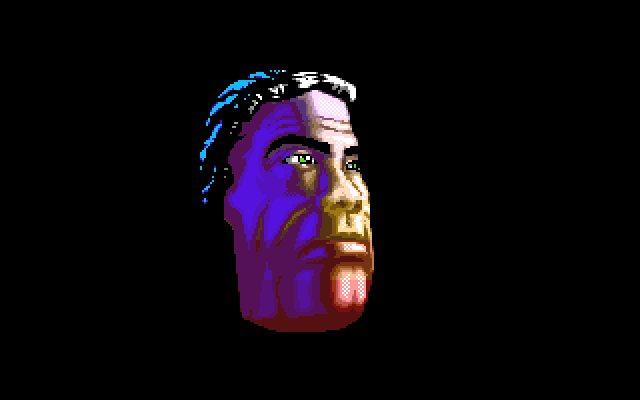











The backgrounds only consisted of two colors which were extended by using the copper to change color registers every couple of lines. The finer gradients were created by also switching between the colors 50 times per second.

The backgrounds only consisted of two colors which were extended by using the copper to change color registers every couple of lines. The finer gradients were created by also switching between the colors 50 times per second.
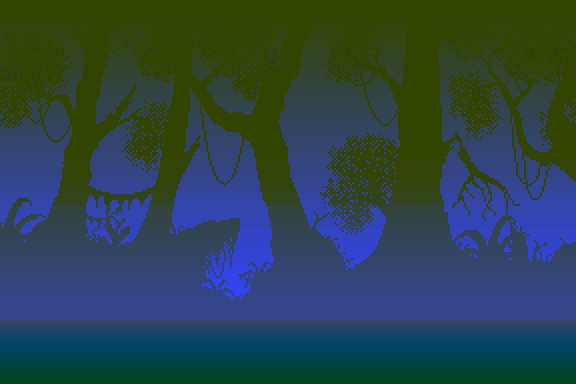
The backgrounds only consisted of two colors which were extended by using the copper to change color registers every couple of lines. The finer gradients were created by also switching between the colors 50 times per second.
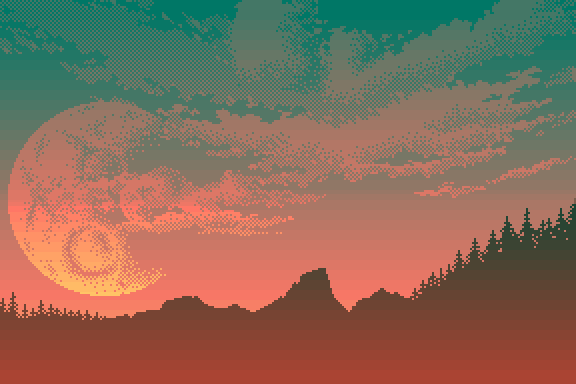
The backgrounds only consisted of two colors which were extended by using the copper to change color registers every couple of lines. The finer gradients were created by also switching between the colors 50 times per second.
The animation for this background wasn't used in the game.
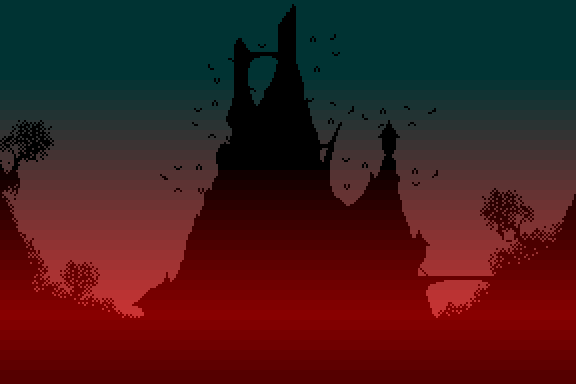
The backgrounds only consisted of two colors which were extended by using the copper to change color registers every couple of lines. The finer gradients were created by also switching between the colors 50 times per second.
This is the only background with animation that was actually used in the game.
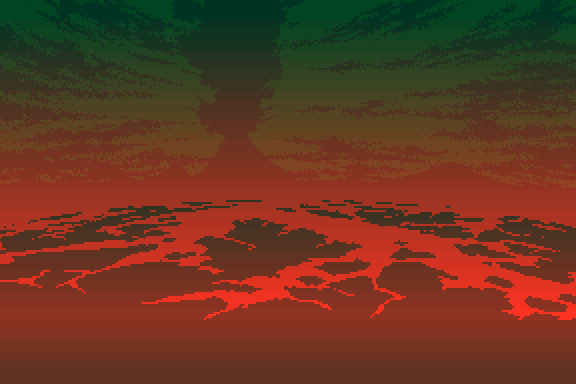
The backgrounds only consisted of two colors which were extended by using the copper to change color registers every couple of lines. The finer gradients were created by also switching between the colors 50 times per second.
The animation for this background wasn't used in the game.
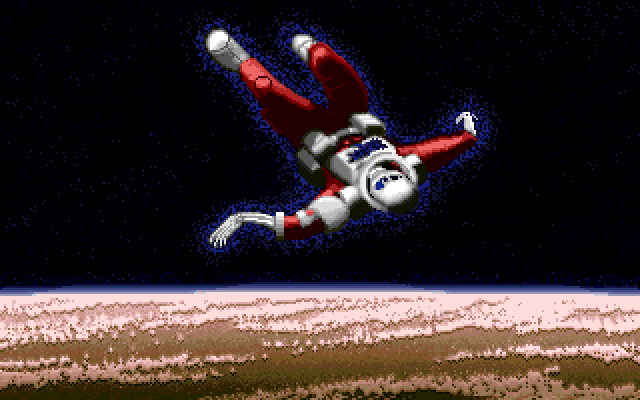




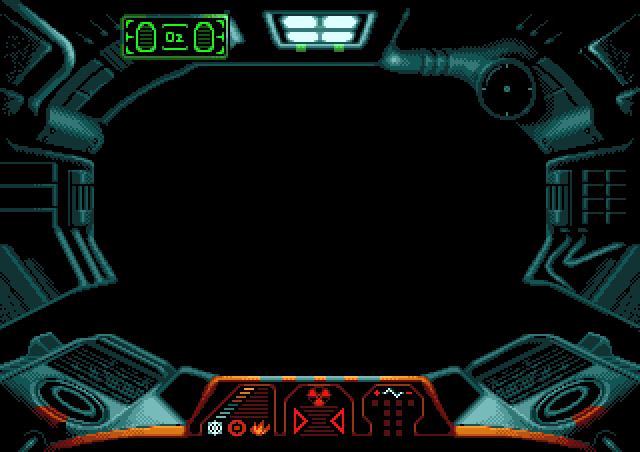



The cockpit is divided into three rows. The top and bottom row using all 16 colors for the cockpit image.
The middle part only uses four colors while the remaining 12 colors are reserved for the 3D content.
The upper 2/3 of the cockpit can be removed to conserve oxygene. Since this is a memory snapshot, it shows both parts separately. In game the top part snaps over the lower part, filling the gap between them.
















































The standard Thalion logo with droplets randomly running down the screen.
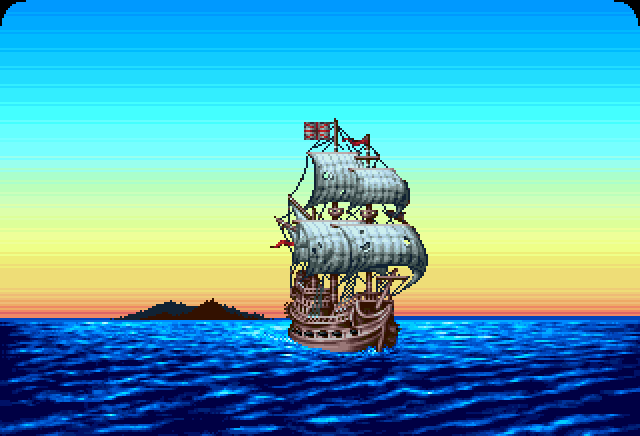



Despite only having 16 colors in Hires Rico was able to add more colors by switching the blue colors to cyan halfway down the image, creating an image with a total of 23 colors.




This image is split into three segments with 16 colors each: The sky, the horizon and the water. This way the image has 38 colors but only uses 16 palette entries or 4 bitplanes, leaving the 5th bitplane for the ending titles.
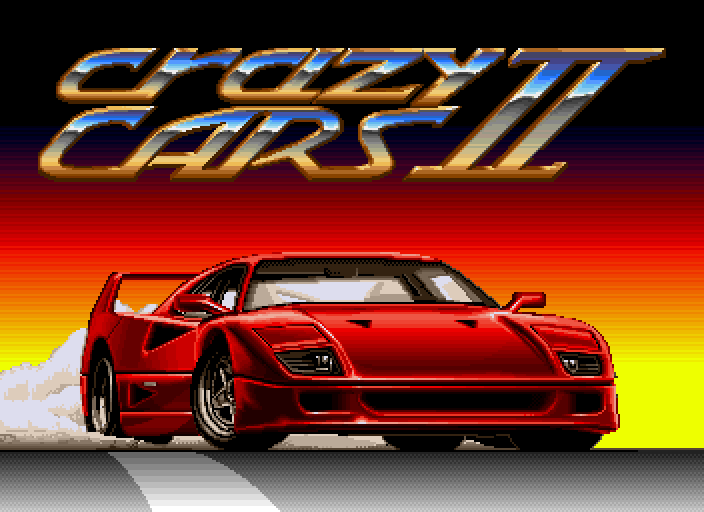






























































































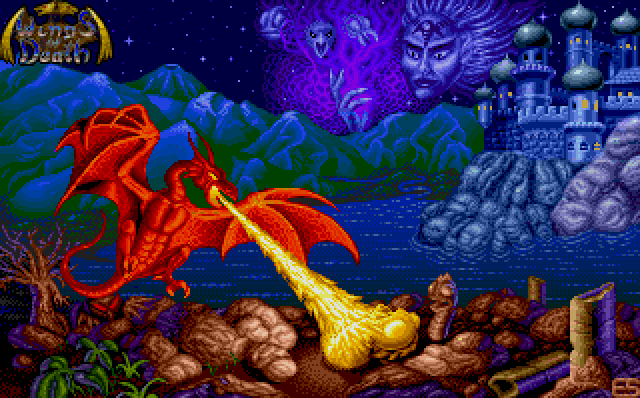


This images uses some crazy amount of copper trickery to extend the 16 base colors to a total of over 120 colors.
But the Amiga version falls behind in comparison to the Atari ST version where over 150 colors are created, despite the Atari ST's lack of a copper chip.
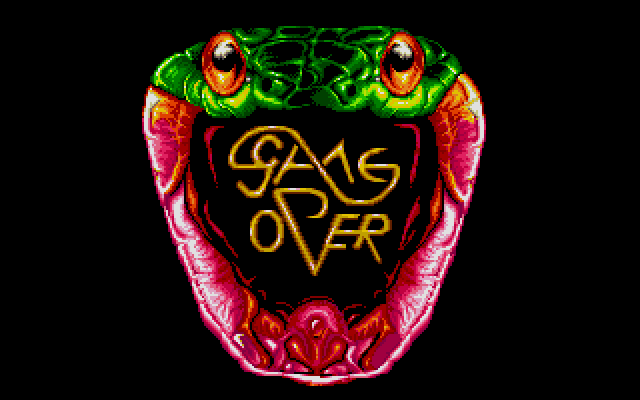


Fighting more with the restrictions of the Atari ST the game over screen would have actually been possible without copper effects but this way the image was made to fit inside 16 colors by switching the palette between the green part of the snakes head and the fiery red mouth.